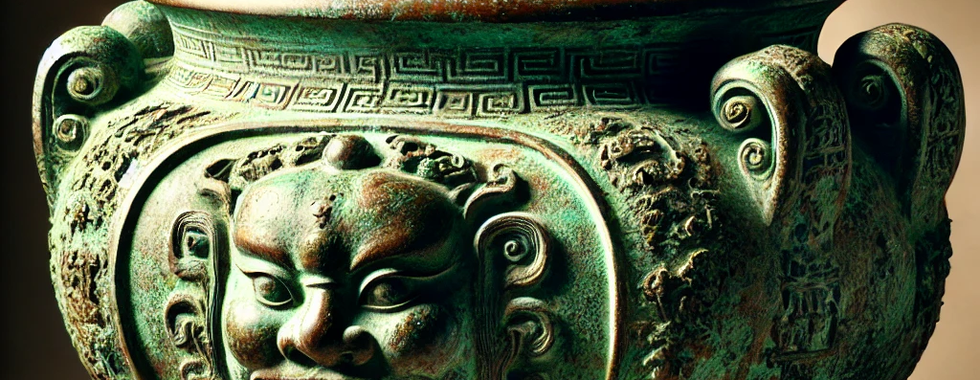Bronze Patinas – Part 1
- gerardlucianricard
- Jul 16
- 2 min read
Updated: Jul 22
Patinas in Bronze Sculpture
A Dialogue Between Tradition and Contemporary Practice
From antiquity to modern workshops, the patina is far more than just a finish. It is the bronze’s second skin—a veil rich with history, chemistry, symbolism, and artistic intent. In sculpture, patina plays a crucial role in how a work is perceived. It reveals the forms, enhances the volumes, and extends the artist’s gesture.
But how does this ancestral craft engage with contemporary practices? Between alchemy and innovation, let’s explore the secrets and significance of patinas in bronze sculpture.
What Is a Patina?
A patina is the result of a chemical reaction between the bronze surface and various oxidizing agents, either naturally occurring or deliberately applied by the artist or foundry. This process alters the color of the metal—warming it, darkening it, or giving it shades of green, brown, black, and even blue or red, depending on the materials used.
Traditionally, patinas are achieved by applying heated or rubbed metal salts (nitrates, sulfates, etc.) onto the bronze surface. The bronze reacts, oxidizes, and the material comes to life.
Patinas in Ancient Sculpture: Beauty Born of Time
In Ancient Greece and Rome, bronze sculptures were often gilded, painted, or patinated to enhance their expressiveness. Natural patinas developed through exposure to the elements—air, humidity, sea salt—giving the bronze deep green or dark brown tones. Some works were even intentionally buried in earth mixed with chemicals to accelerate the aging process.
Sculptors of the time already saw patina as an aesthetic and symbolic dimension of the work. Verdigris, for example, evoked the nobility of the metal, its longevity, and its closeness to the divine.
From the 19th Century to Modernity: The Codification of Patinas
From the 19th century onward, with the rise of art foundries across Europe, patinas became more codified. Each workshop developed its own secret formulas, passed down from master to apprentice. Famous patinas—warm browns, deep blacks, celadon greens—became recognizable signatures, particularly among the foundries that worked with Rodin, Bourdelle, or Camille Claudel.
The relationship between sculptor and foundry grew closer. The foundry no longer merely reproduced a piece—it became a co-creator through the choice and application of the patina. It marked the beginning of a true artistic collaboration.
To Be Continued…
In an upcoming article, we’ll explore contemporary patina techniques—the tools, materials, and methods used by today’s artists in France and beyond. Whether you're a sculptor or simply curious, you’ll discover how bronze can be brought to life with an infinite palette of expression. Art Foundry Atelier d'Art d'Orient Artistic Director ` @ Gerard Lucian Ricard











Comments